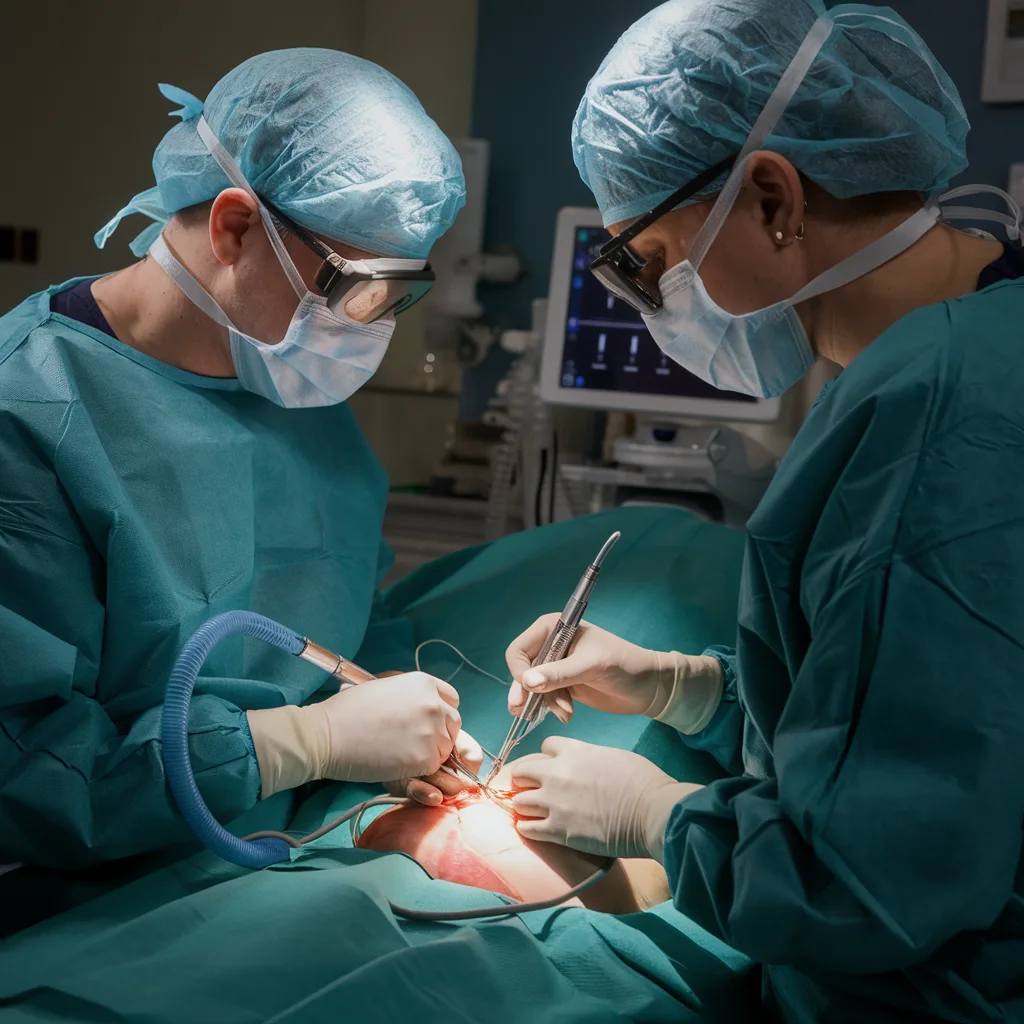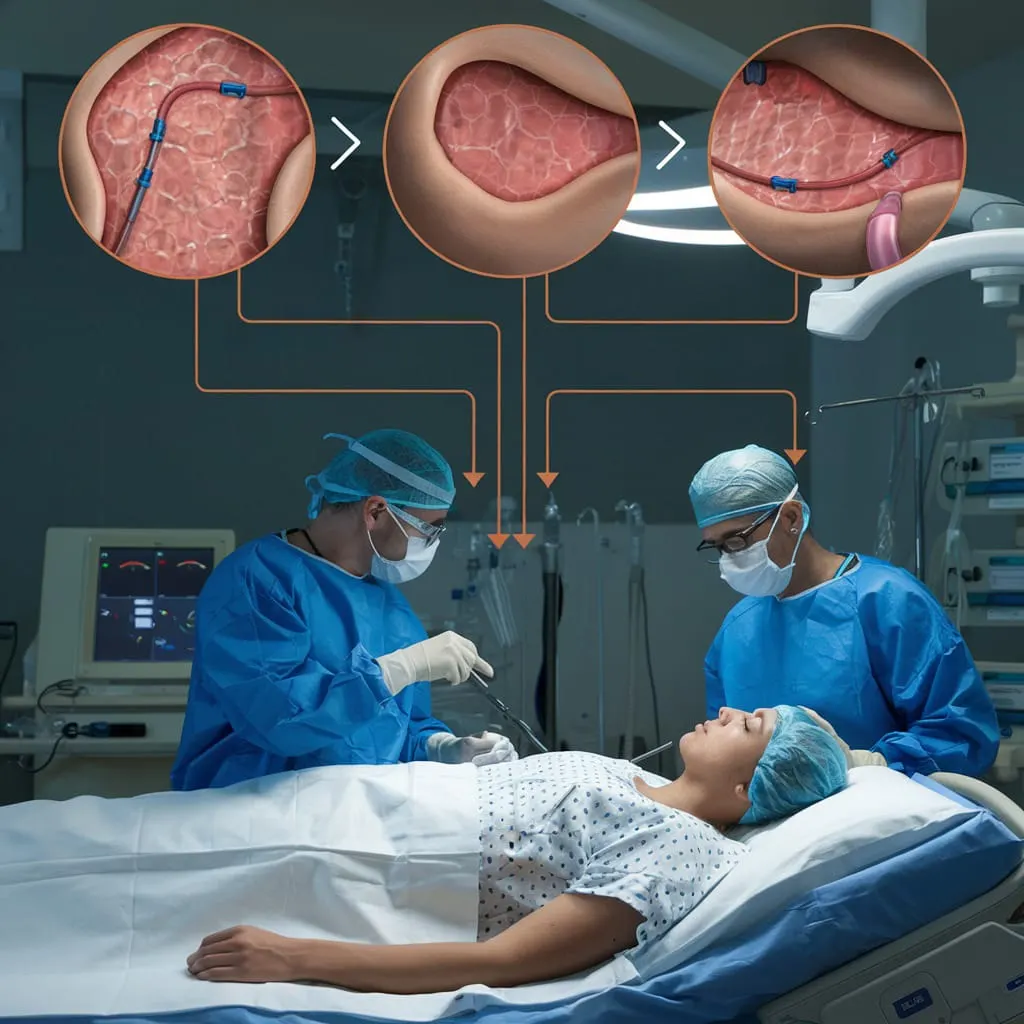Aortic Aneurysm Stent (EVAR) Aortic Dissection Repair
- Home
- Aortic Aneurysm Stent (EVAR) Aortic Dissection Repair
An Aortic Aneurysm is a life-threatening condition in which the aorta, the main artery carrying blood from the heart, becomes weakened and enlarged. If left untreated, an aneurysm can rupture, causing severe internal bleeding. Aortic dissection occurs when a tear forms in the aorta’s inner wall, creating a split that can lead to blood flow disruptions. Endovascular Aneurysm Repair (EVAR) is a minimally invasive procedure that uses a stent graft to repair aneurysms and prevent rupture. EVAR provides a safer alternative to traditional surgery with quicker recovery times.
Causes of Aortic Aneurysm and Aortic Dissection
Both conditions are caused by various factors, often linked to lifestyle, genetics, or underlying health issues:
Aortic Aneurysm:
- Atherosclerosis: Cholesterol buildup weakens artery walls.
- High Blood Pressure: Chronic hypertension increases stress on the aortic wall.
- Genetic Conditions: Disorders like Marfan syndrome increase the risk.
- Trauma: Physical injury can lead to aneurysms.
Aortic Dissection:
- High Blood Pressure: The most common cause of aortic dissection.
- Genetic Disorders: Such as Marfan syndrome or familial aneurysms.
- Atherosclerosis: Damages blood vessels, increasing dissection risk.
- Trauma: Physical injuries can cause a dissection.

Symptoms of Aortic Aneurysm and Aortic Dissection
Symptoms can be subtle, and early detection is critical:
Aortic Aneurysm Symptoms:
- Abdominal or Back Pain: A pulsating feeling in the abdomen.
- Chest Pain: In thoracic aneurysms, pain may be felt in the chest.
- Shortness of Breath: Pressure from the aneurysm affects breathing.
- Dizziness or Fainting: Due to blood flow disruption.
Aortic Dissection Symptoms:
- Severe Chest Pain: A sudden, sharp pain often described as tearing.
- Pain Radiating to the Back: Common in aortic dissection cases.
- Nausea and Vomiting: Often accompanies the pain.
- Loss of Consciousness: In severe cases due to blood loss or shock.
If you experience these symptoms, seek emergency medical attention immediately.

Benefits of Early Treatment
Early detection and intervention are crucial for improving outcomes:
- Reduced Risk of Rupture: Immediate treatment of an aneurysm prevents rupture, which can be fatal.
- Improved Survival Rates: Timely treatment of aortic dissection increases survival chances.
- Minimized Complications: Early intervention helps reduce complications such as organ failure and stroke.
- Faster Recovery: EVAR allows for a quicker recovery with fewer complications compared to traditional surgery.
Latest Treatment Techniques for Aortic Aneurysm and Aortic Dissection
Treatment for these conditions depends on severity and location. Here are the main approaches:
1. Endovascular Aneurysm Repair (EVAR)
EVAR is a minimally invasive procedure that involves inserting a stent graft into the aorta through small incisions in the groin. This stent graft reinforces the weakened area of the aorta, preventing further enlargement or rupture.
- Procedure: A catheter is inserted into the artery via the groin, and the stent graft is guided to the aneurysm site. Once in place, the graft supports the aorta and reroutes blood flow to prevent rupture.
- Recovery: EVAR patients often experience shorter hospital stays and faster recovery times compared to traditional open surgery.
Example: A patient with an abdominal aortic aneurysm undergoes EVAR, and the aneurysm is stabilized with minimal downtime.
Pros:
- Minimally invasive
- Shorter recovery time
- Reduced risk of complications

2. Aortic Dissection Repair
Repair of aortic dissection typically involves surgical intervention, either through open surgery or endovascular methods, depending on the severity.
- Surgical Repair: In severe cases, damaged sections of the aorta are replaced with synthetic grafts.
- Endovascular Repair: A stent graft is inserted through small incisions to stabilize the aorta and prevent further dissection.
Example: A patient with an acute aortic dissection may undergo endovascular repair, where a stent graft is placed to seal the tear and stabilize blood flow.
Pros:
- Minimally invasive with fewer complications
- Effective at managing severe aortic dissections
- Shorter hospital stay compared to open surgery
Conclusion
Aortic aneurysms and dissections are serious, life-threatening conditions that require prompt medical intervention. EVAR has revolutionized the treatment of aortic aneurysms, offering a safer, less invasive alternative to traditional surgery. Aortic dissection repair, through surgery or endovascular methods, offers effective management to improve outcomes and reduce the risk of complications. Early diagnosis and treatment are essential to reducing the risks of rupture, organ damage, and even death.
If you experience symptoms of an aortic aneurysm or dissection, seek immediate medical attention.
Frequently Asked Questions (FAQs)
EVAR is a minimally invasive procedure that involves placing a stent graft inside the aorta to repair an aneurysm and prevent rupture.
Aortic aneurysms are caused by conditions like atherosclerosis, high blood pressure, genetic factors, and trauma.
Aortic dissection can be treated with surgery or endovascular repair, depending on the severity and location of the tear.
Recovery time after EVAR is relatively quick, with most patients being able to leave the hospital the day after the procedure and resuming normal activities within a few weeks.
Would you like to request an appointment?
You can call on +91-98200 86520 for Appointments or fill the form below
If you’re experiencing symptoms of brain vascular issues, contact us today to schedule a consultation and explore your treatment options. Early diagnosis can prevent serious complications and improve your health outcomes.
